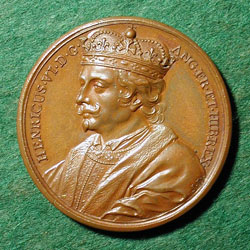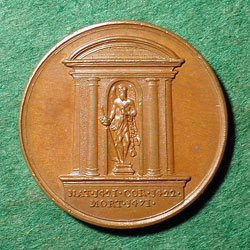

|
HENRY VI |
|
|
Henry VI (1421-1471), King of England (1422-1461, 1470-1471) succeeded his father Henry V in 1422, and on the death of his maternal grandfather, the French King Charles VI, he was proclaimed King of France in accordance with the terms of a treaty made after Henry V’s French victories. Henry lost most of his French territories later in his reign. In 1445 Henry married Margaret of Anjou, a niece of the French queen. Henry had a period of insanity from 1453-1454, during which Richard, Duke of York was Lord Protector, but Richard’s hopes of ultimately succeeding Henry were shattered by the birth of Edward, Prince of Wales. In 1455 Richard defeated Henry’s forces at St. Albans, the first battle in the Wars of the Roses between the houses of Lancaster and York. Although Richard was killed at the Battle of Wakefield in 1460, Henry was deposed in 1461 by the Yorkists, who proclaimed Edward IV as king. Henry went into exile in Scotland but returned in 1464 to once again lead the Lancastrians, though in defeat. Imprisoned between 1465 and 1470, he was restored to the throne in 1470 by Richard Neville, Duke of Warwick. The death of Prince Edward in the battle of Tewkesbury, however, sealed Henry’s fate, and he was murdered in the Tower of London soon afterwards. (taken, in part, from Thompson and O’Brien). |
|